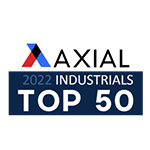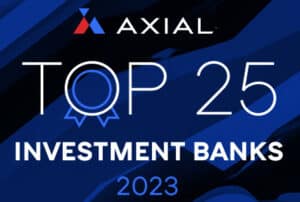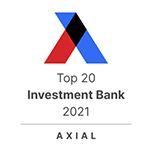
Infrastructure Services M&A Trends: What’s Ahead for Engineering & Construction in 2025?
For middle-market business engaging in engineering & construction (E&C) for the infrastructure services sector, 2025 is a promising year. In spite of uncertainty surrounding other areas of the economy, infrastructure is enjoying an uptick in both government spending and private investment. The market is enjoying a renewed focus on water, utilities, structural engineering, HVAC, roofing and other specialty contracting. As a result, the continued demand and increase in spending for E&C services has gotten the attention of M&A players.
As far back as the Great Recession, infrastructure as a whole had been a back-burner issue in terms of investment. It became a popular talking point for politicians of both parties but only recently was that talked backed up with legislative and financial action. The result has been a sustained boom fueled by spending at not only the federal and but also state levels. These investments have led to the development of new development and the rehabilitation of outdated systems.
With this surge in activity comes the need for a highly skilled workforce and specialized organizations that can provide the manpower and materials to carry it out. Finding organizations with a combined skill set of engineering, design and contractors that specialize in electrical, mechanical, industrial machinery, plumbing, welding, HVAC and others are in high demand. Businesses providing these kinds of resources are sought-after by investors looking to break into the market, or to strengthen an established position. There are several other factors that are driving consolidation in the E&C and specialty contractor industry at this time such as:
Labor shortages are driving consolidation
What’s come to be known as the “Skills Gap” is impacting essentially every industry that relies on hands-on labor; there aren’t nearly enough candidates in the workforce with the skills needed to perform these kinds of specialized jobs. Companies with strong workforce management, training programs, and automation solutions can expect to receive stronger offers from more motivated buyers than companies that haven’t maintained a focus on their skilled employees. Internal apprenticeship programs have seen a significant increase within this sector with business owners determined the grow a specialized and dedicated workforce from within.
Sustainability & Environmental, Social, and Governance considerations have become competitive advantages
Investors are prioritizing firms with a proven track record and experience working with renewable energy technologies, sustainable materials, and waste reduction systems. In addition, LEED-certified projects emphasizing energy efficiency and reductions in carbon footprints are increasingly attractive to buyers.
Technology Adoption sets business apart
Two areas of technology are redefining E&C in the infrastructure sector: Artificial Intelligence, naturally, but also Building Information Modeling – known as BIM. BIM platforms allow teams to collaborate in the development of digital models when planning, designing, managing and executing infrastructure projects. In addition, drone use has become increasingly common in conducting surveys when planning E&C projects. Companies that have established digital workflows, optimized data analytics systems and learned to automate their processes should expect to be in high demand as the sector continues to be driven forward.
Infrastructure is traditionally a resilient sector with the need to address issues of aging infrastructure and outdated management systems, the industry is undergoing a significant amount of changes. Companies tackling the issues of labor and technology are seeing the rewards of such investments and are enjoying significant growth. Private Equity firms and strategic buyers are looking to invest in companies with diversified contracts, significant backlogs history of growth, strong financials, and exceptional leadership teams. As a result, business owners that are looking to take advantage of the prevailing tailwinds can capitalize on decades of hard work and investment.













